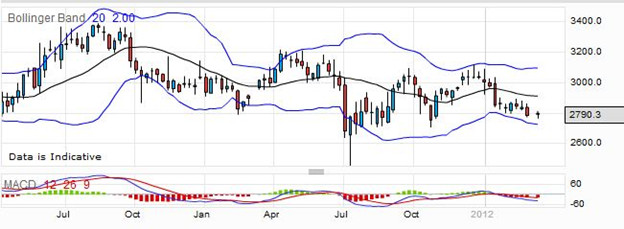AstraZeneca is known as a pharmaceutical company which operates in over 100 countries. What is not so well known is that it was formed by a combination of a Swedish company, Astra, and the British Zeneca group in 1999. Its primary listing is on the London Stock Exchange, though it is also included on the New York Stock Exchange, and the Swedish-Finnish stock exchange (OMX).
The Astra part of this company was founded in 1913, and Zeneca came from a demerging of ICI’s business in 1993. AstraZeneca works with many other companies, and is basically a holding company in the pharmaceutical and medical product arena. It has a range of products, but concentrates on seven or eight areas, such as cardiovascular, oncology (cancer), respiratory, and gastrointestinal products. In the course of its business it has formed alliances with Bristol-Myers Squibb, Schering, Astex, Abbott Laboratories, and many others. It employs nearly 60000 people worldwide.
Because of its diversity, it is not dependent on the success or failure of any one drug, and is therefore not as vulnerable as some other pharmaceutical companies. It is reasonable to say that with an aging population, the healthcare sector is a growth area, and long-term Astra Zeneca will be looking at steady growth.
Here is a weekly chart of the price for the last few years: –

You can see that there has been some fluctuation, which makes it a good prospect for spread trading. With the pharmaceutical industry, you will find that news announcements can have a large impact on the stock price. These announcements include discovery of new drugs, safety approval of drugs to sell on the market, and of course also rejection of drugs when they prove not to perform as expected, or are discovered to have side effects that are unacceptable. You can see that the MACD does a reasonable job of giving a first stage signal for your spread trading, and you should always look for a second indication before placing a spread bet.
Spread Betting AstraZeneca plc Rolling Daily
AstraZeneca is a well-known pharmaceutical and medical research company, and is well diversified with specializations in seven or eight fields such as cancer, and partnerships with other pharmaceutical companies. It presents good opportunities for spread betting profits. The current price for a rolling daily bet is 2785.2 – 2791.3. As an example, assume that after doing some analysis you decide that the price is going down, you could place a spreadbet for £3 per point at the selling price of 2785.2.
Perhaps you are correct, and the price goes down to a level of 2623.6 – 2629.7, when you decide to close your bet and take your profit. Your short or sell bet was placed at 2785.2, and closed at the buying price of 2629.7, which means that you gained 155.5 points. For the amount you wagered, that represents a profit of £466.50.
On the other hand, AstraZeneca might have rallied after you placed the bet, and once it topped 2900 you could have chosen to close the bet and accept your loss. Say the price was 2905.2 – 2911.3 when you closed your spread trade.
This time, your short bet which you opened at 2785.2 was closed at the price of 2911.3. The difference between these two numbers is 126.1, and as it was a sell bet this is the number of points that you lost, amounting to £378.3 for this bet.
Many spread betters use stop loss orders to get them out of a losing position even when they do not have time to watch the markets. You could have placed a stop loss order at say 50 points higher than your entry price, and allowed your spread betting broker to close the position for you if the price went against you. Say the price went up to 2842.6 – 2848.7 by the time the stoploss order closed the bet.
This time you have lost 2848.7 minus 2785.2, which is 63.5 points. You have kept your losses down to £190.50.
AstraZeneca plc Futures Spreadbet
With most spread betting providers, you are able to take a spread bet on the futures prices, typically for near, mid, and far term pricing. For Astra Zeneca, the current quote for a near term quarter is 2780.8 – 2790.8. It is usual for the spread on future style bets to be larger than on the daily rolling bet, as it includes an allowance for financing to the expiry date.
Suppose that you believe the price is going to go up, you could place a long bet for £5 per point at the buying price of 2790.8. If indeed the price does go up, you might find that you can close the spread bet when the price reaches 2932.6 – 2941.9. The spread bet would close at the selling price of 2932.6, so taking off the entry price of 2790.8, you find you have gained 141.8 points. For your stake of £5 per point you have won £709.
Of course, that some bets will not win, so suppose that the price falls after you place the bet and you decide to close the spread trade when it reaches 2676.1 – 2685.8. In this case the bet closes at 2676.1, which means that you have lost 2790.8 minus 2676.1 or 114.7 points. This works out costing you £573.50.
As an alternative to following the price and manually closing the spreadbet if it is losing, you could have placed a stop loss order when you took out the spread trade. Perhaps you chose to set it 50 points away from your entry price. The stop loss order may not close your bet at exactly the level you set, so say it closed at 2726.3 – 2736.3. This time, your loss is limited to 2790.8 minus 2726.3. That works out to 64.5 points, which is a loss of £322.50 at your given stake.